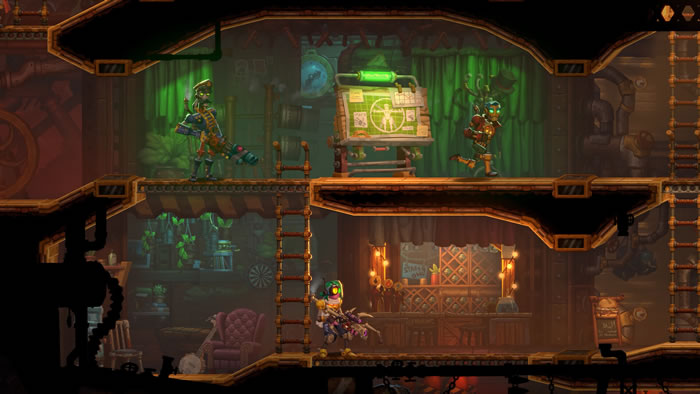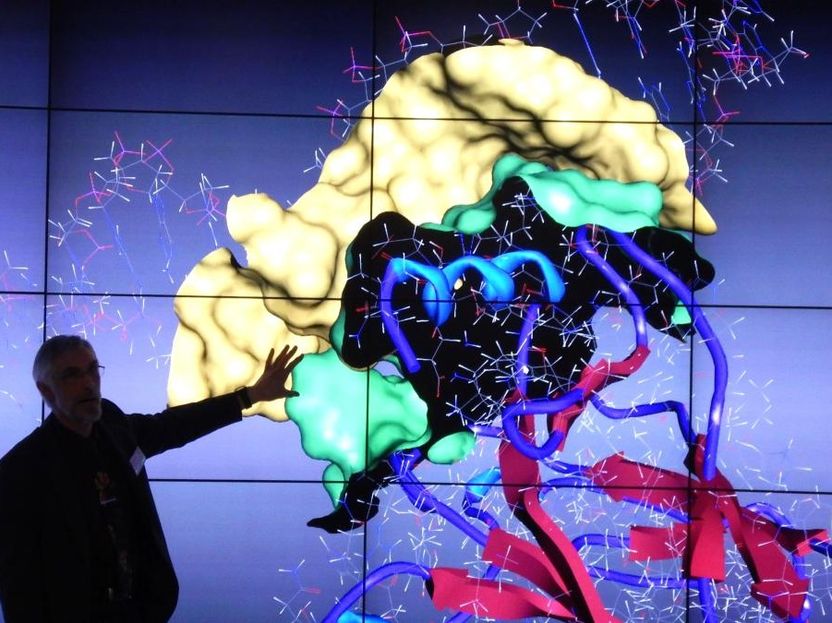Biochemical research increasingly relies on rigorous computer modeling and analysis. To achieve this, disciplines as diverse as natural sciences, computer science and engineering must work side by side. A research group has been established at Bonn-Rhein-Sieg University of Applied Sciences (H-BRS) that combines existing expertise in visual computing, biomedicine and materials science. Through their computer-aided models, the group wants to bring molecular communications to the big screen of virtual reality – thus enabling unexpected insights.
It is a revolution brought about by computational modeling in the life sciences. For example, highly complex biochemical processes in humans, animals or plants can be elucidated and analysed, down to the atomic level. Molecular modeling is now a well-known and very productive part of research. Computer-based methods also make it possible to predict disease progression – an invaluable aid, for example, when searching for active ingredients or diseases such as cancer.
A research group has been formed at Bonn-Rhein-Sieg University of Applied Sciences that wants to use this technology to find answers to socially relevant research questions that are difficult or impossible to reach using laboratory experimental methods alone.
The collaboration thus links the three university research institutes IVC, IFGA and TREE. The goal of scientists is to open up new subject areas and develop new analysis tools by combining empirical knowledge from different specialized fields. The focus will be on materials science and biochemical issues that can be studied efficiently with the help of molecular modeling.
The abbreviation UMMBAS that the group gave to the research project takes this into account. It stands for “using molecular modeling for biochemical application scenarios.” The first topic that the research group set out to address was research into the myosin family. These proteins are found in muscle cells and are responsible for movement. Malfunctions are associated with serious diseases such as heart disease or neurological disorders.
3D visualization of processes at the atomic level will play a major role. The Institute for Visual Computing (IVC) at H-BRS has extensive experience in visual representation of large amounts of data, sensor data processing, pattern recognition and embedded structures. In addition to the IVC, the Institute for Functional Genetic Analysis (IFGA) and the Institute for Technology, Resource Conservation and Energy Efficiency (TREE) have launched the UMMBAS project.
“The project thus promotes the digitalization of science at H-BRS,” says Matthias Preller, professor of structural biology and chemical analysis and spokesman for the UMMBAS project. “We will develop ingredients and active materials more precisely and efficiently in collaboration within the university and with external partners – without location constraints and outside traditional disciplines.”
H-BRS scientists follow a new approach based on the idea of creating highly detailed 3D models of data to be analyzed and processed simultaneously with other users located in other locations. “Distributed immersive virtual reality environment” is the name of this concept, which offers many advantages for location-independent collaboration, but has rarely been investigated in relation to biochemical questions. The concept of a distributed virtual environment is known from the world of computer games, where the concepts of cooperative interactions are already well established. The Bonn-Rhein-Sieg University of Applied Sciences has particular expertise in the field of linking scientific visualization with computer game technology, which Professor Wolfgang Heiden brings to the UMMBAS project.
The distributed virtual environments software being created as part of the UMMBAS project aims to be made available to the general public in the long term. The project participants expect a clear benefit in the short term: cooperation between the university sites in Sankt Augustin and Rheinbach could greatly benefit from this.

“Certified tv guru. Reader. Professional writer. Avid introvert. Extreme pop culture buff.”






More Stories
Researchers are developing 3D printing technology for ultra-thin multilayer tube structures
Meta: New AI-powered advertising tools for more success in the reels
When Lilli and husband D do the work